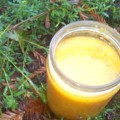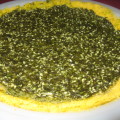
Being a Vegan doesn’t mean you’re some kind of extremist freak the way it did say 20 years ago. In fact, the number of Vegans in the U.S. has been increasing every year and is slowly but surely becoming main stream, even hip thanks to some celebrity endorsements and a growing concern for disease prevention. So now that Veganism has found a more acceptable place in society what has taken its place? Well, there will be differing opinions about this I’m sure but I think one of the more popular topics is the idea of becoming a Raw Foodist. Here we’ll explore some of the basics and help you consider whether or not going Raw is right for you.
 Why go Raw?
Why go Raw?
First of all, there are two different approaches to eating raw, one as a Vegan and the other as an Omnivore. A Raw Vegan diet consists of unprocessed raw plant foods that have not been heated about 115 F and typically consume organic fruit, vegetables, nuts, seeds, sprouted grains and legumes. A Raw Food Omnivore eats all of this plus eggs, fish, meat and non-pasteurized and non-homogenized dairy products such as raw milk, raw kefir, raw cheese, and raw milk yogurt.
The main idea is that by eating raw, the food in question does not lose the enzymes typically damaged, deformed or killed entirely in the cooking process. There are three different types of enzymes; metabolic, digestive and food. Food enzymes are vital to the body because they can help you pre-digest the food before it reaches the small intestine, thereby reducing the need of the pancreas to produce additional digestive enzymes. Since hundreds of thousands of reactions take place in the body at every minute, ingesting enzymes that make it easier for two proteins react together simply means less work for our body. Raw food researchers and enthusiasts believe that putting less burden on our bodies by eating organic, uncooked, clean foods will aid in the prevention of health problems like food allergies, gas, heartburn, belching, cramping, IBS (irritable bowel syndrome) and diabetes. This also includes consuming foods without pesticides, additives, fungicides or those that have been genetically modified, all believed to put even more stress on the immune system, making the onset of disease more likely.
Basics of the Raw Vegan Food Pantry
There are a TON of resources out there regarding how to convert your pantry, so if you want to really delve into this, then check out some of the links provided below. In general, here’s a top 10 list of raw vegan foods (compliments of Jordin Rubin, author of The Raw Truth).
- Leafy Greens
- Citrus Fruits
- Sunflower, Sesame and Pumpkin Seeds
- Avocados
- Coconut Kefir
- Carrots
- Celery
- Cultured Veggies (pickles, sauerkraut, etc.)
- Watermelon
- Cantaloupe

Hard-To-Do-Without Kitchen Aids
A few months ago, I was curious enough about going raw that I signed up for a Raw Vegan Foods 101 class. It was the perfect introduction to this world and I was eager to begin incorporating some of the recipes I’d been exposed. In order to really give this way of eating a good shot you really need to have a few tools on hand, a few of which will mean a financial investment. Otherwise, you will end up at the mercy of restaurants and pre-packaged raw foods.
- High-Speed Blender: This type of blender is powerful and pulverizes nuts, seeds, grains, etc. Preparing nut mylks, smoothies, soups and smoothies is a piece of cake among other things. Believe me when I tell you that I really tried working around this one though since it meant spending several hundred dollars. I researched and read and experimented but came to the conclusion that if you are really serious about going raw and care about variety then it’s a must.
- Dehydrator: This one, in my opinion, isn’t as crucial but comes in very handy if you’re interested in adapting a totally raw diet. A dehydrator is used to dry at low temperatures and simulates sun drying.
- Food Processor: This kitchen tool chops dry and low-moisture ingredients such as nuts and vegetables and is ultimately a big time saver but you can also chop everything by hand if you don’t want to spend the money or have a limited amount of storage space.
- Recipes, Community and Experimentation: This is the fun part (mostly). Trying new recipes and experimenting means success but also at times failure. You’re not going to nail it every time, so be prepared for that and embrace the process. Joining community forums online, attending food preparation classes, etc. will help you tremendously.
It Doesn’t Have To Be Complicated…all the time.
Simply put, an apple is raw my friend; a beautiful, whole, crispy, juicy fruit already wrapped up in its own skin and therefore highly transportable. I think you know what I’m getting at here; incorporating raw vegan foods just makes common sense and you can do it without much of a fuss. With health in mind, food is at the very top of the list. What goes in will always do something to our bodies that will either help us or hurt us so choose raw, clean, plant-based foods as much as possible. Also, if cooked vegan food is your main preference, then consume enzymes from another source in order to spare your body from that task.
And if you’re seriously considering the idea of adopting a totally raw vegan diet, proceed with wisdom and think about consulting a professional who can help you with your particular set of life circumstances such as wanting to reverse ill-health, feeding small children, etc.
Pluck by definition means resourceful courage so to be a Plucky person is a worth-while endeavor towards life in general but when applied to aspiring to greater health I believe the opportunities are limitless. So go discover your Raw Pluck!
by Melissa Sanborn of Nutritional Brands, PureVegan
References and Resources
- Ani’s Raw Food Essentials by Ani Phyo. www.AniPhyo.com
- The Raw Truth by Jordin Rubin. www.gardenoflife.com
- 2012 Vegetarian/Vegan Statistics in the U.S. http://www.statisticbrain.com/vegetarian-statistics/
- Siegren Johnson, Raw Vegan Chef and Educator. www.TruCuisine.com






2 Comments
Chia (324 comments)
May 12, 2012 at 12:34 pmThanks for sharing this!
happycowgirl (37 comments)
May 18, 2012 at 9:14 pmI disagree with your first sentence that 20 years ago being vegan meant you were “some kind of extremist freak”. Not the vegans I knew. And I don’t think raw foodists today are extremist freaks. How about trailblazers and trendsetters? I’d go with that. But I understand the point you’re trying to make. It’s wonderful that vegan is going mainstream and I hope going raw does too.